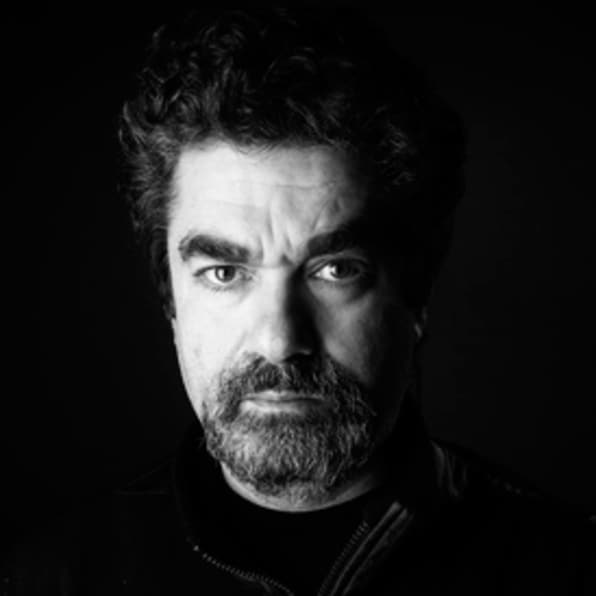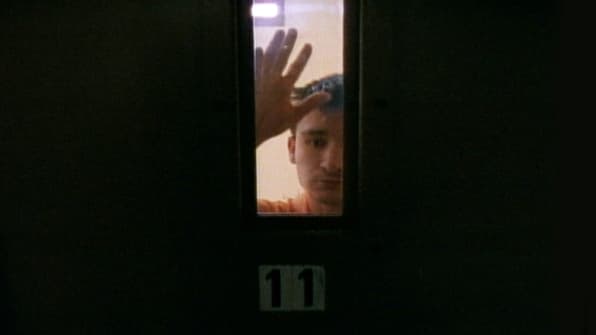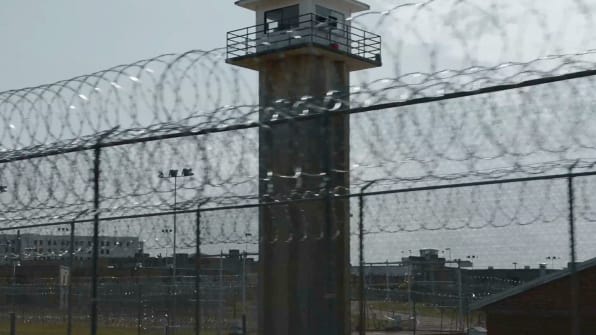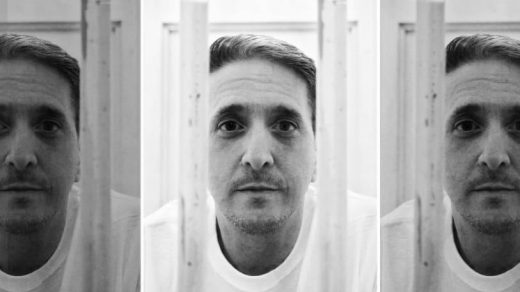Documentary Activism In The Age of Alternative Facts
Joe Berlinger is trying to save a man’s life. And he’s doing it with a camera.
True crime documentaries may be having a moment right now, in the wake of Serial, The Jinx, and Making a Murderer, but they’ve been Berlinger’s beat for decades. The Emmy award-winner was ahead of his time when he released Paradise Lost: The Child Murders at Robin Hood Hills in 1996. That documentary proved highly influential, not only on future filmmakers—the Making a Murderer crew are avowed fans—but on real-life events, helping to eventually free the accused killers. Now, as the genre becomes more popular than ever, and millions of people are aching to make a difference, it seems the times have caught up to Joe Berlinger.

Joe Berlinger[Photo: Carlo Allegri]
Killing Richard Glossip is the director’s latest project, a four-part series premiering April 17 on Investigation Discovery. In it, Berlinger explores the curious case of a man sitting on death row for purportedly commissioning a murder in 1997, despite the fact that virtually no evidence connects him to the crime. Over the years, Richard Glossip has had three stays of execution, the most recent of which will only last is long as it takes Oklahoma’s prison system to revamp its execution protocol. In the meantime, Berlinger has been busy, working unenviable hours to spread word of Glossip’s seeming innocence to the broadest audience possible.
Of course, this isn’t the only kind of activism a documentary can perform.
The person who granted one of Richard Glossip’s stays of execution in 2015 was then Attorney General for Oklahoma, Scott Pruitt, the climate change denier who is currently in charge of the Environmental Protection Agency. It’s issues like this one that demand attention, beyond An Inconvenient Sequel, Al Gore’s forthcoming documentary on the matter. With activism on the rise following the 2016 election, Fast Company spoke with Berlinger about the usefulness of documentaries, and how to put them into action.
How Documentaries Can Make a Difference
The main aim of a cause-focused documentary is to raise awareness and generate support. Sometimes, however, they can do a lot more than that. They can change viewer’s minds, prolong investigations, and sometimes even smoke out a credible witness who never came forward.
“Documentaries can demonstrate problems that authorities will then take notice of and do something about,” Berlinger says. “Sometimes, they also bring private citizens into the action who want to help and donate money and take charge, which is what happened with Paradise Lost.”

Paradise Lost: The Child Murders at Robin Hood Hills, 1996[Photo: courtesy of HBO]
That film, which Berlinger started shooting in 1993 with his creative partner Bruce Sinofsky, followed the arrest of a trio of teenagers for the murder of three children, and continued throughout the subsequent trial. National hysteria over devil worship at the time played a role in convincing jurors these metalheads–nicknamed The West Memphis 3–committed the murders in a satanic ritual. When the film came out and showed how flimsy the case actually was, it created this huge groundswell of support from people who thought they were innocent, and attracted a lot of celebrity supporters like Eddie Vedder, and Johnny Depp, and Natalie Maines. A support group called Free the West Memphis 3 sprang up. All this pressure and support ended up raising money to reinvestigate the case and all sorts of DNA evidence came forward to help exonerate these guys–along with two more films in the series.
“We stuck it out over 20 years and finally the state of Arkansas released these guys,” Berlinger says. “It was an imperfect ending because they were released under an Alford plea, this rarely used legal maneuver where you basically stand up in front of a judge and explain that the prosecution has enough evidence to convict you and for the purposes of a court procedure you plead guilty to a lesser charge. So all that public support helped a guy on death row and two guys serving life without parole accepted a lesser charge and be let out of prison.”

Why It’s a Golden Time For Documentaries
There has never been a time when affordable video equipment has coincided with an enormous surge in activism.
“We’re entering into an era of profound concern for American democracy,” Berlinger says. “A lot of people in my business are upset about the direction of the country, what’s happening in politics. For example, if the president has his way with the budget and we gut the EPA regulations, and we cut protections for the small guy on every level, I just think it’s an environment ripe for the need to tell these kinds of stories.”

The timing couldn’t be better for talented filmmakers and neophytes who embark upon filming a documentary: there’s an urgent appetite for this sort of content, and more outlets for it than ever. Digital players like Amazon, Netflix, and Hulu are snapping up documentaries at the major film festivals, and they join premium channels like HBO, Showtime, and the vast expanse of cable overall. Not only that, but the uptick in interest comes at a time when independent documentarians are seen as particularly trustworthy.
“Most of the television networks are being controlled by a handful of corporations and there are certain stories that won’t be touched because they’ll offend advertisers and that’s just the way of the business in the television model,” Berlinger says. “With the gutting of print journalism because of the internet, there’s been a tremendous decrease in old fashioned print investigative reporting. So I think the documentarian has stepped in as the guy and maybe has a more important role than ever in terms of investigative reporting.”
Best Practices for Making a Documentary
Before putting anything on camera, the first thing an aspiring documentarian should do is make sure people will stand in front of it.
“Access is the key. That’s first,” Berlinger says. “You can’t take no for an answer, but you have to find that balance of not being pushy or intrusive. Don’t try to oversell or undersell yourself. Just be yourself. Because if you have to remember what you said, you might be in trouble. I often offer to come out if the subject or their attorney will give me five minutes of their time, and there have been times when I’ve been turned down over the phone but then it’s the personal connection that comes with a face-to-face that ends up getting some access.”
Next is research. After nailing down access, it’s about reading and immersing yourself in the details of the case: research, transcripts, case files, everything you can find. Look for the parts of the story that don’t quite add up and then start finding out why. Of course, sometimes the filming itself is the research.
“If it’s a present-tense subject where you’re purely following a story as it’s unfolding, you do some research obviously, but you also kind of just jump in,” Berlinger says. “When it has the ticking clock element of following a present-tense story as it develops, the important thing is filming. If it’s a deeply historical subject, like the film I have coming out at Tribeca [Film Festival] this year, Intent to Destroy, which is about the Armenian genocide of 1915, that’s obviously a very research-heavy project, so we did a significant amount of the research before filming.”

Perhaps the most difficult part of a documentary, however, is finding an ending. Unlike fictional films, the real-time unfolding events of a documentary seldom neatly resolve themselves.
“It’s hard when you follow a real story in the present tense,” Berlinger says. “It’s like jumping out a window and hoping there’s a mattress to catch you.”
Sometimes a deadline forces the filmmaker to stop filming and go find an ending in the edit room, and sometimes its the budget. What’s rarer, however, but does indeed happen sometimes, is when the subjects tell you when to stop. In Berlinger’s case, it happened while filming the Metallica-goes-to-therapy epic, Some Kind of Monster.
“We’d been filming for three and a half years, and it was the most I’d ever shot for a film,” he says. “The band had been falling apart, struggling to make an album, they haven’t toured in years, and at the end of the film they were embarking on a world tour of their new record. We were at a concert filming them onstage for the umpteenth time, at a festival in Germany, and at some point Lars Ulrich jumped off his drum kit and yelled in my ear, “It’s time to go home!” He meant it lovingly, but I think he sensed it was time to wrap it up. And interestingly enough, that entire tour we realized that the best way to end the film is for the audience to not see the tour–just end with James Hetfield taking the stage for the first time in years as a sober person, and we don’t use all of the footage we shot on that tour. Often the ending isn’t what you think it will be, so you have to have faith that your story will work out.”
Whether people are satisfied with the ending, or believe in it at all, is another story, though. Despite the fact that it’s boon times for documentaries, America is currently a jaded, incredulous place. Te erosion of faith in objective fact is bound to have a trickle-down effect on all sources of information.
“There’s a whole school of people out there who believe in fake news and alternative facts,” Berlinger says. “The credibility of the media has been called into question, and whether or not that applies to documentarians, we’ll have to wait and see.”
(60)






